What Art Design Is the Facade of the Lutetia Hotel Paris
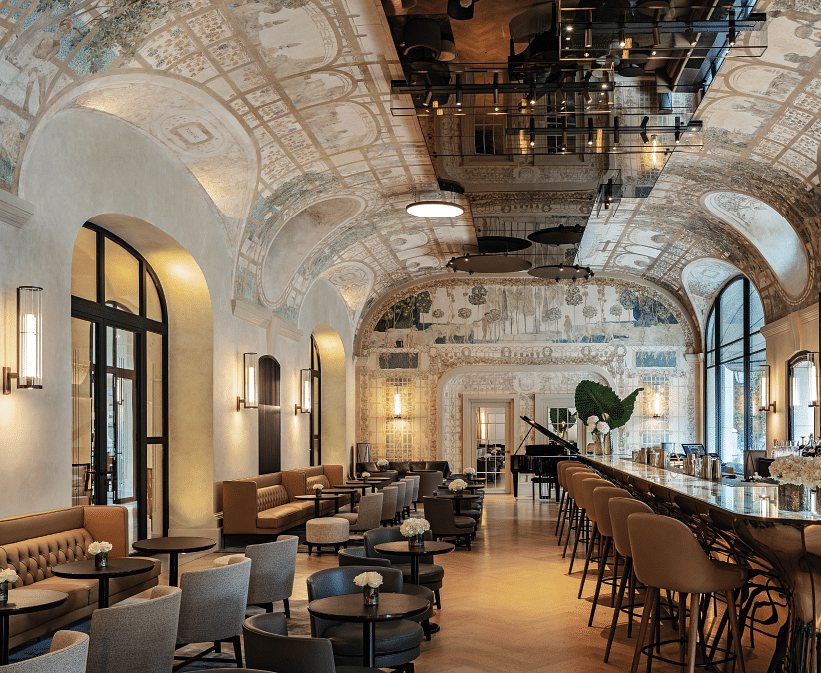
Since the starting time of the 20th century, the Hotel Lutetia – located midway betwixt the Saint-Germain of existentialism and the Montparnasse of jazz and creative person studios – has been the HQ of the literary and artistic crowds. A building brimming with stories, Jean Cocteau, Albert Camus, Jean-Paul Sartre, Antoine de Saint-Exupéry, James Joyce, Samuel Beckett, Ernest Hemingway, Josephine Baker, Serge Gainsbourg, Catherine Deneuve, David Lynch and Brad Pitt have all resided there.
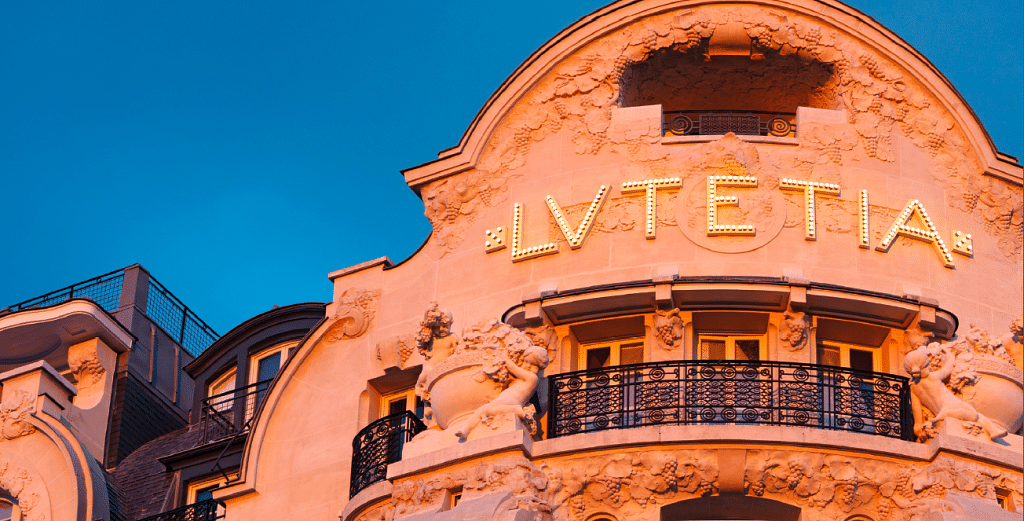
With an aesthetic straddling the Art Nouveau and Fine art Deco movements, information technology was too a place where artists like Arman, Philippe Hiquily and Takis left their mark. The tardily French sculptor Cesar Baldaccini decorated his own suite while another eminent sculptor Leon Binet blithe the iconic undulating stone facade with depictions of birds, angels, vines and bunches of grapes. By the fourth dimension the hotel closed in 2014 for renovations, it owned nearly 280 listed artworks.
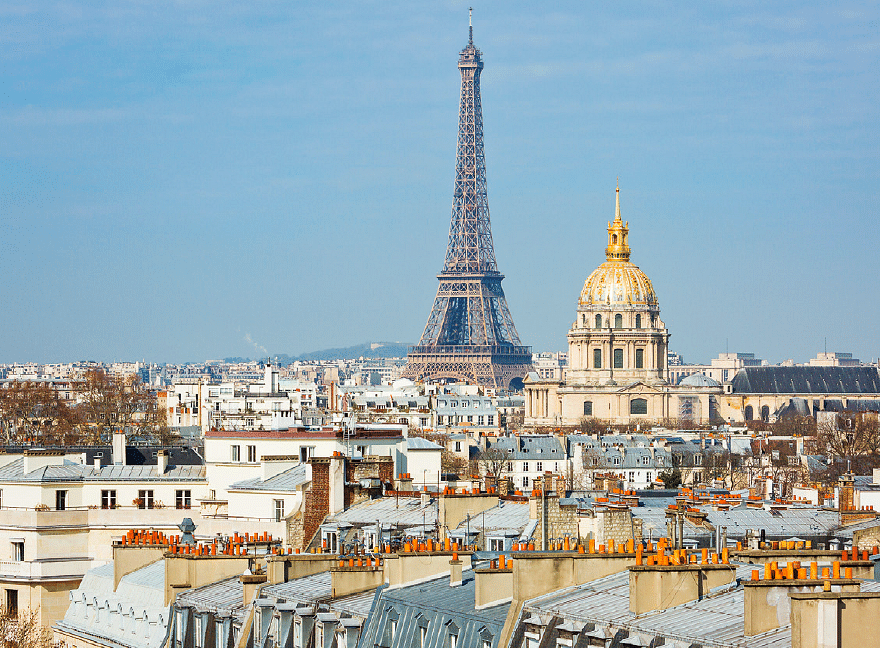
It's no coincidence that the hotel overlooks Le Bon Marche, the world's first mod department store created by French entrepreneur Aristide Boucicaut, as information technology was initially built in 1910 to business firm the shop'southward clients and suppliers during their visits to Paris. Just as Le Bon Marche jostled the codes of the retail trade and introduced novel marketing concepts, the avant-garde Lutetia ushered in the era's near innovative luxuries: hot water, telephones for calling reception, air-conditioning and rolling shutters activated from inside the room. Henri Tauzin and Louis-Hippolyte Boileau, whose father Louis-Charles Boileau was the builder of Le Bon Marche, constructed the hotel using pioneering processes and materials at the fourth dimension: concrete, drinking glass and hot-riveted steel pillar foundations developed by Gustave Eiffel (the technology genius behind the Eiffel Tower completed in 1889).

Fast forwards a century and French architect Jean-Michel Wilmotte has masterminded the latest four-year, $310 meg overhaul of the Lutetia owned by The Set Hotels, in clan with Perrot & Richard, experts in the restoration and respect of heritage. Jean-Michel totally redesigned the hotel's layout, tore downwards and revamped each room. He reduced the total number of the rooms from 233 to 184 to cleave out space for 47 exquisite suites, seven of which are signature suites, elevated the hotel to "palace" standards (an official French regime rating for hotels that are considered ameliorate than v-star), ensured it met current regulations, and upgraded its energy efficiency and wastewater recycling measures.
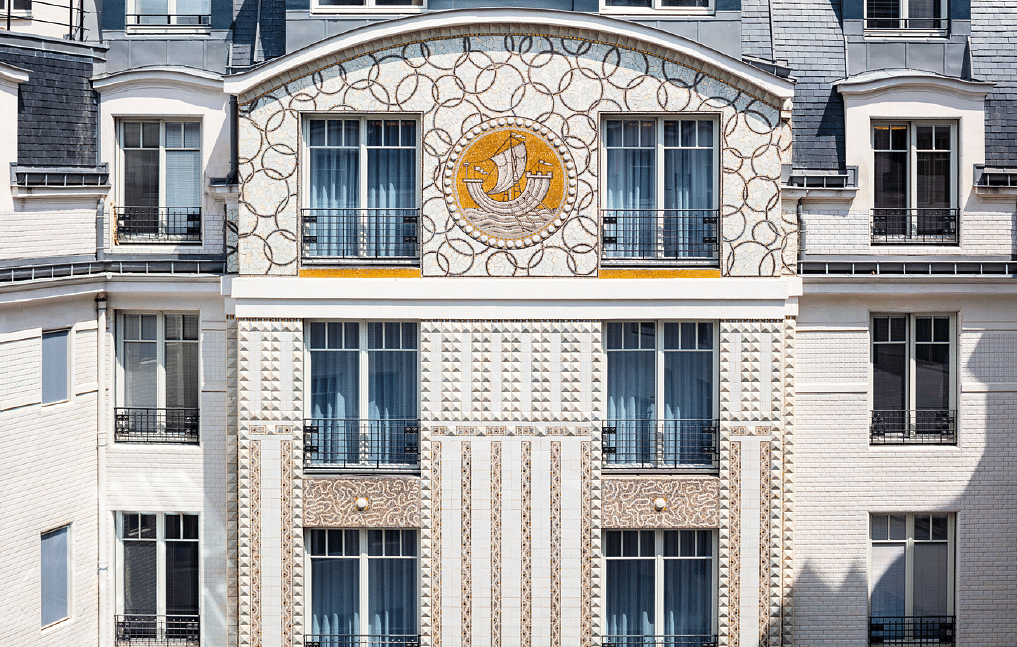
Approximately 100 unlike crafts companies including specialists in the restoration of stained-glass elements, decorative paintings, mosaics and sculptures were involved in the refurbishment. The difficulty lay in striking a delicate rest between history and modernity. "We were so fortunate to find ourselves before a true myth, and to renovate this decor from the past by projecting it into the 21st century," Jean-Michel says. "In this particular instance, ii separate elements are at stake: designing a hotel and designing the Lutetia, which is undoubtedly one of the Paris Left Banking company's grandest hotels. Bringing it up to lawmaking and reviving it was vital. Our challenge was to rejuvenate a place while respecting its roots, its identity, its originality and its personality."

Bringing the past back to life, a whole serial of friezes and bas-reliefs in the entrance hall were unearthed and resurrected. Nearly 17,000 work hours were needed to restore Adrien Karbowsky'southward allegorical fresco that was subconscious beneath vi coats of paint in Bar Josephine. Paying homage to the Abbaye-aux-Bois convent's garden – on summit of which the hotel had been built – information technology portrays wheat, grape clusters, fruit copse, animals, harvesting and hunting.
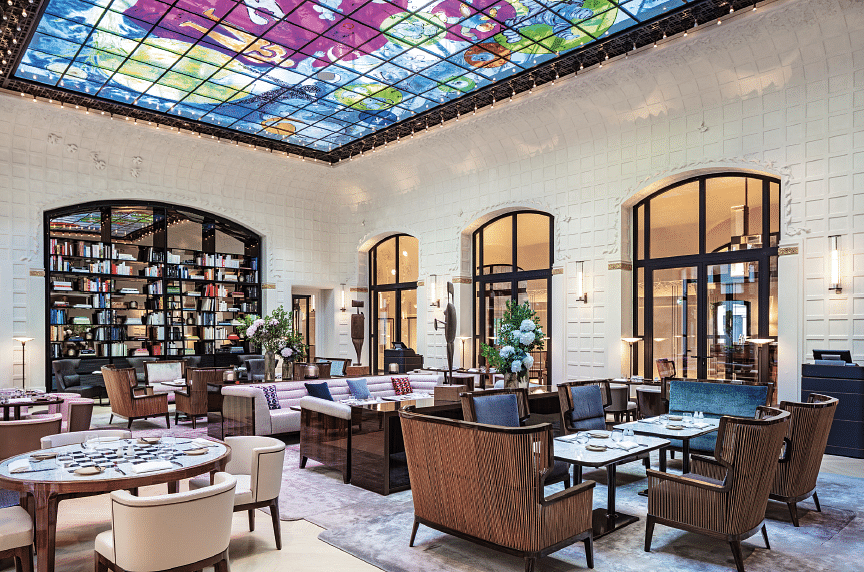
A major facelift was as well carried out at the eye of the Lutetia since it was the only Parisian grand hotel lacking a garden – a requirement for an establishment of that level of prominence. Therefore, an existing windowless k salon was demolished and an internal courtyard patio created to permit daylight to inundation the interiors. Over at the once stuffy Brasserie Lutetia, where French chef Gerald Passedat – known for his three Michelin-star restaurant Le Petit Nice in Marseille – is reinventing the codes of Parisian brasserie cuisine with his take on the best of the Mediterranean, the original double-height ceiling of the 1910 building was rehabilitated. French artist Fabrice Hyber was enlisted to paint the Salon Saint-Germain's newly-rediscovered 100-square-metre glass roof, imagining a fantastical watercolour populated by strange creatures like his signature green homo, the Michelin Homo, Pac-Man, astronaut and teddy bears.
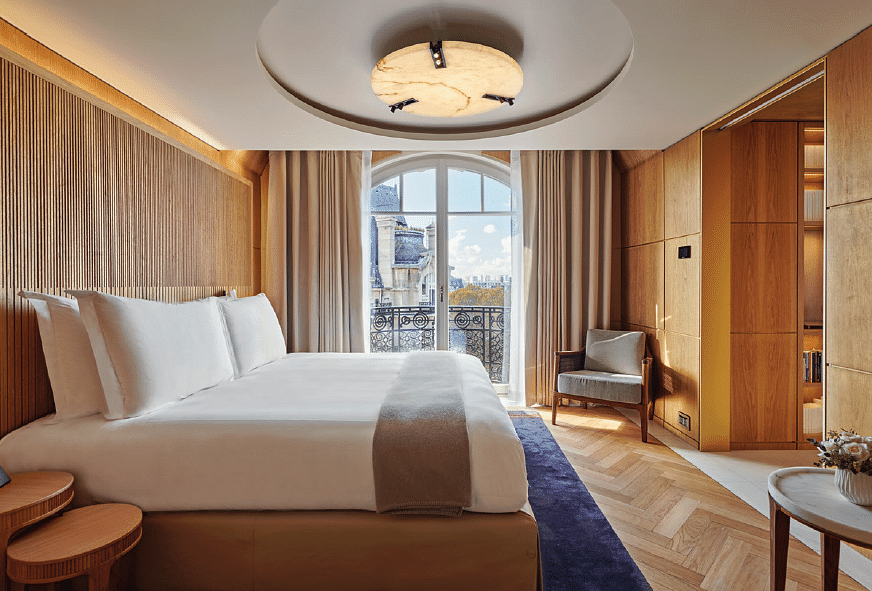
The contemporary guestrooms feature Fine art Deco-style furniture pieces designed by Jean-Michel and manufactured exclusively past Poltrona Frau for the hotel while the 700-sqare-metre Akasha spa with vi treatment cabins, gym and hair salon bathed in natural low-cal showcases a 17-metre-long pool surrounded by marble walls and floors, porthole-shaped decorations, Lalique vases and works past haute couture textile artist duo, Céline Alexandre.
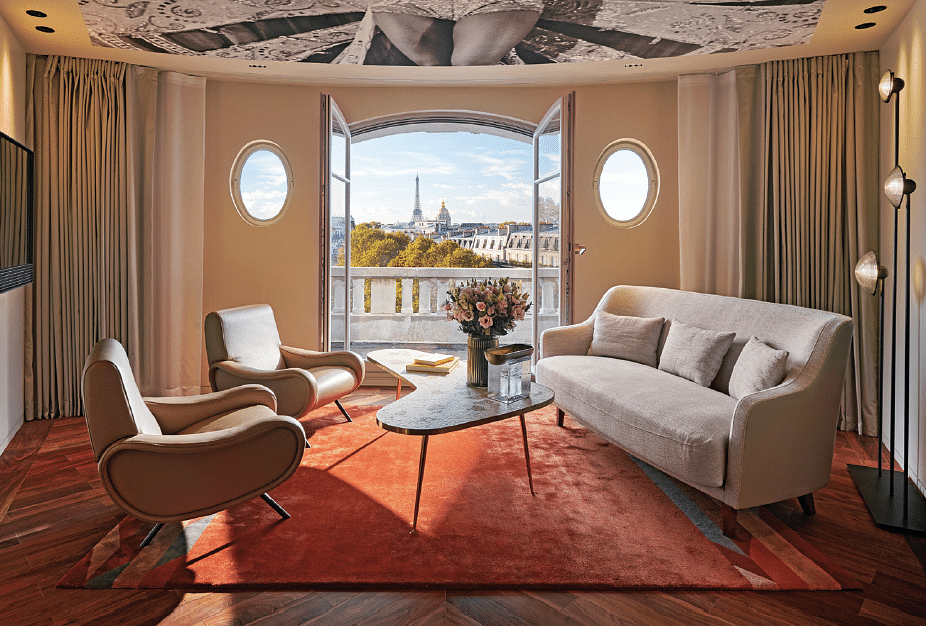
Jean-Michel comments, "Every element was custom-designed and produced exclusively for the Lutetia. Nosotros fought throughout the entire projection to avoid ending up with standard furniture from a catalogue. The reinterpretation of the furniture was particularly exciting. Nosotros started off with the one-time furniture, just used different materials. For example, fly chairs are dorsum, but we replaced canework with leather straps. Nosotros also used perforated metals. It feels like a dialogue is kickoff between restored traces of the past, recreated new elements and these make-new 1910-style- inspired pieces of furniture. We also carried through a strong forest theme to add warmth to the unabridged project. The year of 1910 was the time of the big transatlantic adventures. Our idea was to draw in some of the atmosphere from those large old yachts by using varnished wood in every circulation pathway. Hence, they are similar to passageways on a boat. The goal was to bring almost a potent contrast with the very bright rooms."
Source: https://www.homeanddecor.com.sg/design/hotel-lutetias-updated-look-is-a-marriage-of-classic-and-contemporary/#:~:text=The%20facade%20of%20the%20hotel,and%20Takis%20left%20their%20mark.
0 Response to "What Art Design Is the Facade of the Lutetia Hotel Paris"
Post a Comment